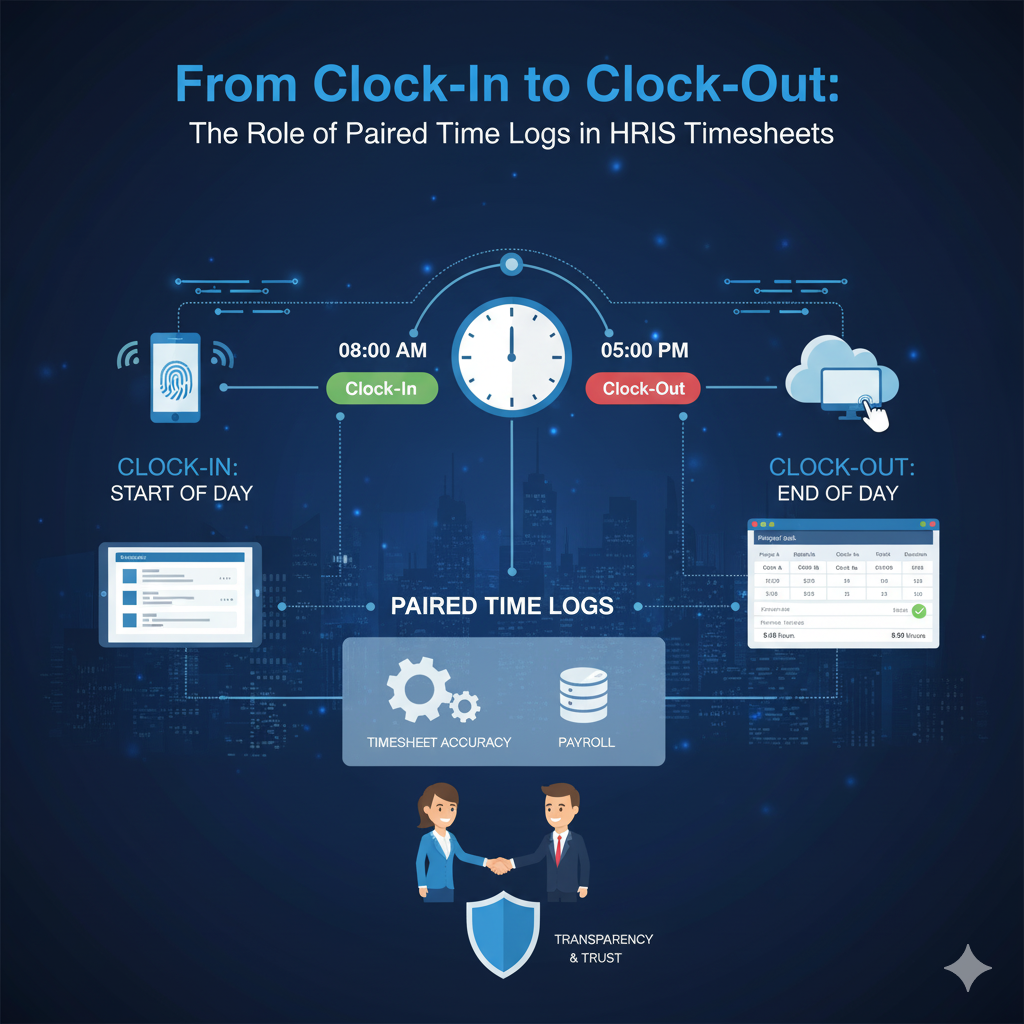Accurate employee attendance tracking is the backbone of effective workforce management. In today’s digital workplaces, Human Resource Information Systems (HRIS) have transformed how organizations manage attendance, payroll, and compliance. One essential feature that makes this possible is the use of employee paired time logs — a structured system that records both clock-in and clock-out times to generate precise timesheets.
In this article, we’ll explore how paired time logs in HRIS work, why they are critical for timesheet generation, and how they promote accuracy, efficiency, and compliance.
What Are Paired Time Logs in HRIS?
Paired time logs refer to the system of recording both an employee’s clock-in (start of work) and clock-out (end of work) entries. These paired records create a complete picture of daily working hours, eliminating inconsistencies often found in manual timesheets.
In HRIS platforms, these paired logs are automatically matched and processed to:
- Calculate total hours worked
- Identify overtime or undertime
- Track breaks and shift differentials
- Generate timesheets for payroll and performance monitoring
Why Paired Time Logs Matter in Timesheet Generation
Accuracy in Payroll Processing
One of the most common challenges in HR is ensuring employees are paid accurately. By capturing both clock-in and clock-out data, paired time logs eliminate guesswork and human errors. This ensures:
- Correct computation of daily, weekly, or monthly work hours
- Precise overtime and night shift calculations
- Reduced payroll disputes
Improved Workforce Transparency
Transparency builds trust. With paired time logs in HRIS, employees can access their attendance records anytime. This provides:
- Clear visibility into their worked hours
- Accountability for time spent at work
- Fair and transparent reporting for evaluations
Compliance with Labor Laws
Every organization must comply with local labor laws regarding working hours, rest periods, and overtime pay. HRIS paired time logs help ensure compliance by:
- Recording actual hours worked
- Generating reports for audits and inspections
- Protecting organizations from wage and hour disputes
Operational Efficiency
Manual timesheet preparation is time-consuming and prone to error. Paired time logs automate timesheet generation, allowing HR teams to:
- Save time on data entry and corrections
- Focus on strategic HR tasks
- Use real-time attendance insights for workforce planning
Benefits of Using Paired Time Logs in HRIS
Here’s how organizations benefit from leveraging this feature:
✅ Accurate payroll integration
✅ Reduced timesheet fraud or manipulation
✅ Streamlined shift and break management
✅ Easy-to-generate compliance reports
✅ Higher employee satisfaction through transparency
Best Practices for Implementing Paired Time Logs in HRIS
To maximize results, organizations should:
- Educate employees on clock-in/clock-out policies.
- Integrate time logs with payroll and leave systems.
- Audit logs regularly to ensure accuracy.
- Leverage analytics from timesheets for performance insights.
Final Thoughts
From clock-in to clock-out, paired time logs serve as the foundation for accurate and reliable timesheets in HRIS systems. They not only ensure accurate payroll but also build trust and transparency across the workforce.
By adopting HRIS time logging features, businesses can move beyond manual tracking and embrace a smarter, more efficient way of managing employee time — one that benefits both employers and employees.

